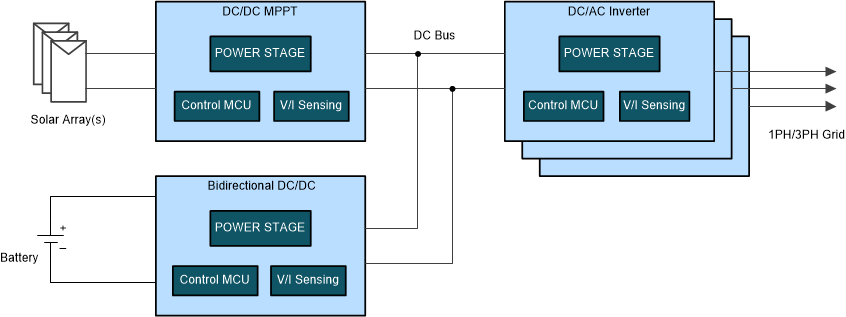SLLA498 October 2020
3 ESS Integration: Storage-ready Inverters
Solar energy is highly variable during the day and from day to day (throughout the year) as well. In a grid connected system, maximum power is delivered to the grid during noon, while in the morning and evening it is less. In many regions world-wide, the price of power is demand-dependent – the price (cost per watt) is higher when demand is high (like evenings and mornings), and it is lower when demand is low (noon, late night). So a consumer with solar installation gets a lower price for the power he produces during the noon time, while paying higher for the power he consumes off the grid in the evening. Also, if there is any fault in the grid, all the power produced goes to waste as the grid is not accessible. Due to such issues, the trend is to have some local energy storage so that energy can be stored and released to the grid when it is accessible and when demand is high. Figure 3-1 illustrates this type of system.
 Figure 3-1 ESS Integrated Solar Inverter.
Figure 3-1 ESS Integrated Solar Inverter. The differences from a conventional grid-tied system are the addition of a battery, a bidirectional DC/DC power stage to charge and discharge the battery, and the conversion of the inverter stage to a bidirectional inverter and PFC stage. As far as power conversion is concerned, this trend towards local energy storage means an increased focus on bidirectional power conversion stages. The major blocks in such a storage ready solar string inverter is given in Figure 3-2.
 Figure 3-2 Block Diagram of Storage-ready Solar String Inverter.
Figure 3-2 Block Diagram of Storage-ready Solar String Inverter.